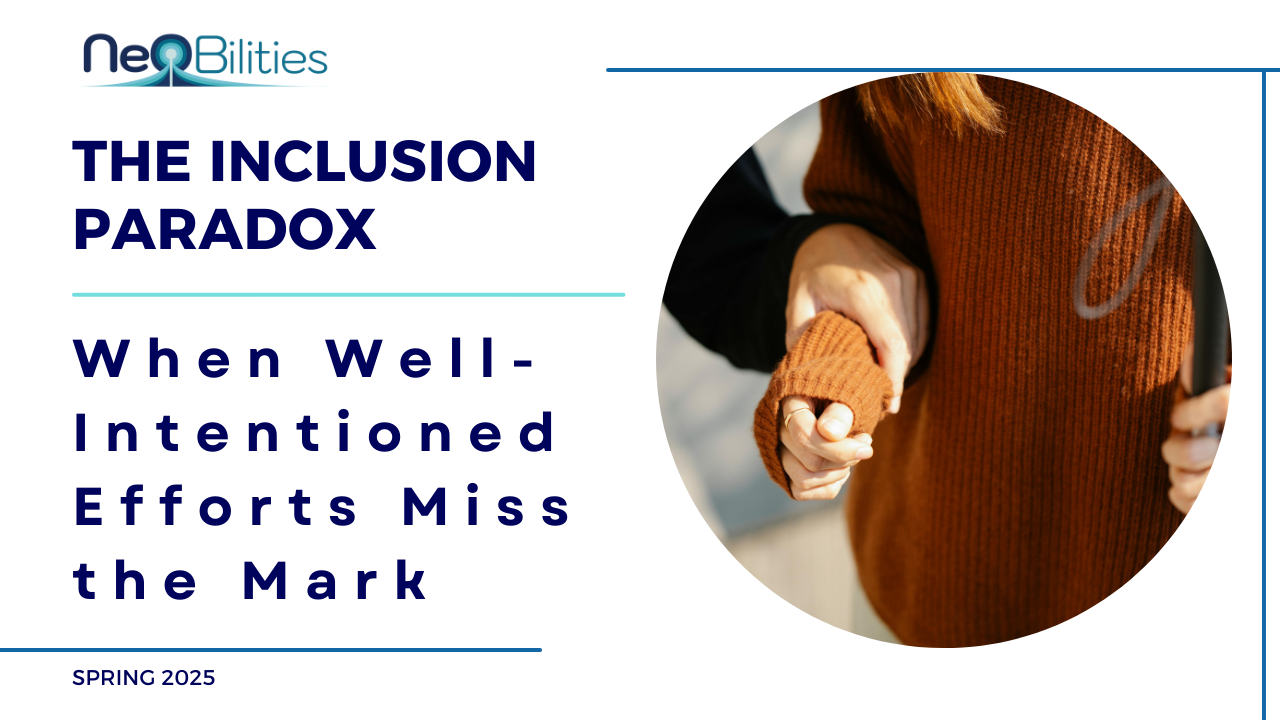The Inclusion Paradox: When Well-Intentioned Efforts Miss the Mark
Mar 27, 2025
Many organizations and practitioners are working to create more welcoming environments for diverse populations, including people with disabilities. Yet despite good intentions, these efforts sometimes fall short—particularly when it comes to disability inclusion.
The Paradox in Practice
The inclusion paradox occurs when well-meaning efforts to include actually reinforce separation or othering. Consider these common scenarios:
- A practice creates a "special" process for clients with disabilities rather than making their standard process universally accessible
- An organization celebrates disability inclusion while failing to include disabled voices in decision-making
- A professional asks, "What can we do for them?" instead of "How can we remove barriers to full participation?"
Each scenario reflects genuine desire to be inclusive, yet paradoxically reinforces the very division between "us" and "them" that inclusion seeks to bridge.
When Inclusion Efforts Backfire
In my work with organizations and practices, I've consistently observed that inclusion initiatives without disabled leadership or perspective often prioritize the wrong elements—focusing on compliance rather than experience, or emphasizing physical accessibility while neglecting equally important communication and attitudinal barriers.
The most common challenge isn't resistance to accessibility—it's misalignment. Organizations and practitioners invest time and resources solving problems that might not represent the most significant barriers faced by disabled individuals.
Signs Your Inclusion Efforts May Be Misaligned
Your inclusion efforts might be missing the mark if:
- People with disabilities weren't involved in designing your accessibility approach
- You haven't collected feedback from disabled clients about their experience
- Your accessibility efforts focus primarily on physical space but not communication methods
- You view accommodations as exceptions rather than opportunities to improve service for everyone
- Disability inclusion is treated as separate from other inclusion initiatives
The Integration Solution
Resolving the inclusion paradox requires integration rather than separation. This means:
- Centering disabled voices in accessibility decisions
- Applying universal design principles to benefit everyone
- Embedding accessibility throughout all systems rather than treating it as a separate initiative
- Recognizing the intersectionality of disability with other identities
- Shifting from accommodation to anticipation of diverse needs
Moving Forward
True inclusion starts with a simple but profound shift: moving from "How can we help them?" to "How can we create environments where everyone can participate fully?"
When we make this shift, accessibility becomes not a special accommodation but the foundation of quality service delivery—creating environments where all clients, staff, and community members can thrive.
Need Help Getting Started?
Get started with a free 30-min disability audit or schedule a discovery call!


